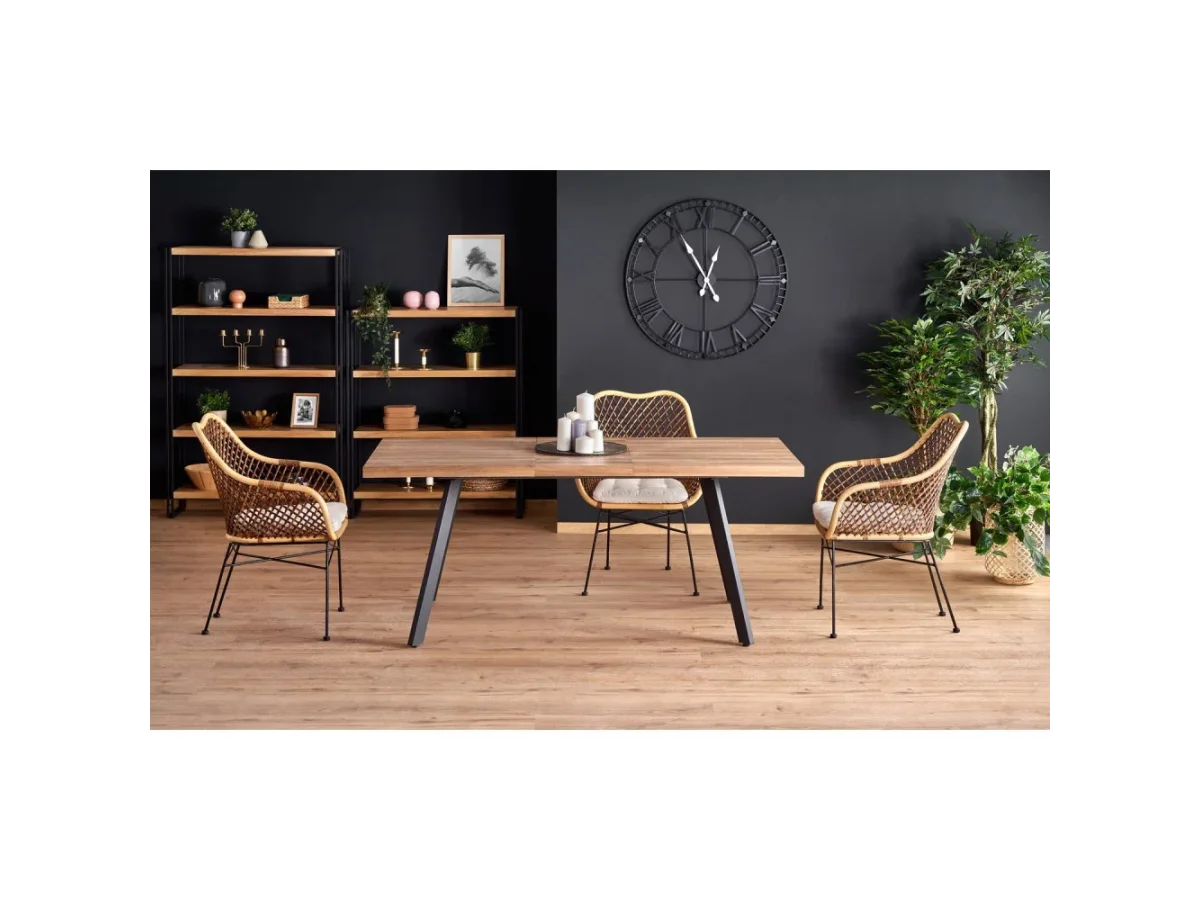Rectangular tables for kitchens and living rooms
Kitchens require not only appropriate utensils and cutlery for preparing and eating food, but also furniture that is suitable for organizing the process. This primarily includes chairs or a sofa for sitting, as well as items that provide a horizontal support surface for placing food. According to unofficial statistics, the latter are most often used rectangular tables traditional or innovative configurations. According to experts, this distribution of user preferences is due to a number of both objective and subjective factors.
Among the most significant, the following are worth mentioning:
The vast majority of kitchens, whether in city high-rise apartments or country houses, are rectangular in plan. Therefore, when furniture is arranged around the perimeter, the remaining free space in the center of the room follows a similar configuration. As a result, whether the table is placed in the center, against a wall, or even in a corner, a countertop with right angles is both the most convenient to use and allows for the most efficient use of available square footage, which is especially important in compact living spaces.
The prevalence of such pieces in the last century left its mark on traditions passed down from the older generation to the younger. Therefore, even in the absence of elderly family members, descendants who have absorbed their preferences also tend to use classic designs. Typically, only the most forward-thinking young people with a modern outlook on life or a creative spirit are capable of unique experiments in furnishing their homes.
Since cutting sheet materials, such as particle board, into right-angle pieces produces minimal waste, the relative cost of structures made from them is the lowest. This undoubtedly directly impacts the prices of finished products from furniture factories, so purchasing these products allows for some savings and thus influences financial expenditures, thereby preventing a family budget deficit.
Moreover, when manufacturing rectangular tables, it is easier to achieve the desired result, both in terms of reliability and durability of the structure, and in terms of finishing, resulting in a magnificent appearance that enhances the interior of the room and creates a favorable impression of the homeowners in visitors, thereby positively contributing to the creation of a solid image in the surrounding community.
Types and features of rectangular table analogues
For the arrangement of halls of cafes and restaurants, instead of rectangular ones, they turned out to be much more convenient round tables, granting all members of a group absolutely equal status. This factor is even more important when organizing group negotiations between equal partners or playing certain board games, but these non-dining activities take place in other establishments. Thanks to the central symmetry, regardless of position, it is easy to reach any dishes, plates with appetizers, and bottles of drinks for shared consumption. Another important feature for alcohol retail establishments is the absence of sharp protruding corners on the furniture, which significantly reduces the number of unpleasant situations both by providing more space for intoxicated customers to move around, by being more resistant to tipping, and by posing a lower risk of injury. Of other similar products, two deserve special mention.
Oval tables
Oblong oval tables They are suitable for both family gatherings and negotiations between two delegations. People sitting opposite each other find it convenient to communicate, exchange documents, pour drinks into glasses and goblets, and make toasts. Items of this shape, produced by specialized companies, are often used in casinos for games such as poker, but for a provincial club or the country mansions of wealthy individuals, products from regular furniture factories are also a good alternative.
Coffee tables
In addition to the standard set of furnishings for houses and apartments, many owners purchase compact coffee tables They can also serve as a stand for board games such as chess, drinks and treats, books for reading, medicines and many other things for entertainment and everyday life.

Write a comment